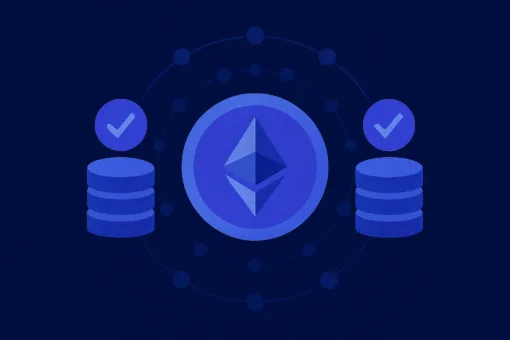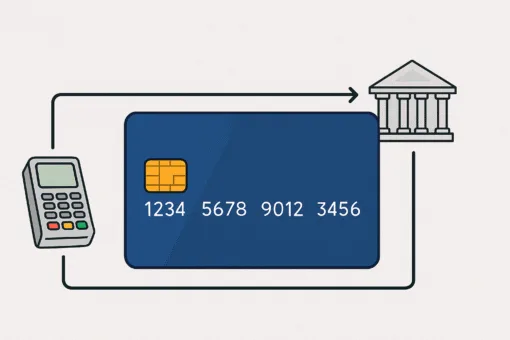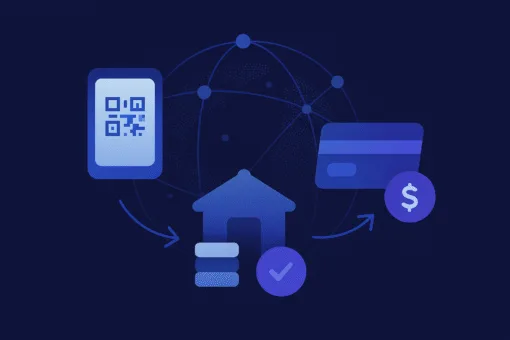Proof-of-Stake, commonly abbreviated as PoS, is one of the most important consensus mechanisms in blockchain technology. It underpins the security and efficiency of many of today’s most widely used blockchains, including Ethereum since its 2022 transition known as “The Merge.”
PoS was designed as an alternative to Proof-of-Work (PoW), the consensus model made famous by Bitcoin. Where PoW relies on computational power and energy-intensive mining, PoS secures networks through economic stake and validator participation.
Understanding PoS is crucial for anyone interested in how modern blockchain systems operate, from crypto investors to developers, fintech professionals, and policymakers. This article explains what Proof-of-Stake is, how it works, its advantages and criticisms, and its role in shaping the future of decentralised finance and digital infrastructure.
Why Consensus Matters in Blockchains
Blockchains are decentralised databases maintained across thousands of computers. To function without a central authority, they require a mechanism for agreeing on which transactions are valid and in what order. This mechanism is called consensus.
Consensus ensures that:
- Transactions cannot be spent twice (avoiding double spending).
- The blockchain is resistant to manipulation.
- Participants can trust the system without trusting each other.
Proof-of-Stake is one such consensus model, offering an energy-efficient and scalable approach to securing blockchain networks.
The Origins of Proof-of-Stake

Proof-of-Stake was first proposed in 2011 as an alternative to Proof-of-Work. The motivation was clear: while PoW had proven secure, it consumed vast amounts of electricity. Developers began experimenting with PoS to achieve security without wasteful resource expenditure.
The first major implementation appeared with Peercoin in 2012. Since then, many projects, including Cardano, Tezos, Solana, and Ethereum post-Merge, have adopted PoS or variations of it.
How Proof-of-Stake (PoS) Works
Staking
Participants lock tokens as collateral to secure the network and qualify as validators.
Validator Selection
The protocol randomly selects validators, weighted by stake, to propose or attest blocks.
Block Proposal
Chosen validators create new blocks, confirm transactions, and broadcast them to the network.
Rewards & Penalties
Honest validators earn rewards. Dishonest or offline validators risk penalties or slashing.
Advantages of Proof-of-Stake
Proof-of-Stake offers several clear advantages:
Energy Efficiency: PoS consumes a fraction of the energy used by PoW, making it more environmentally sustainable.
Accessibility: Participation does not require expensive mining hardware. Anyone with tokens can stake, either directly or through a pool.
Scalability: PoS networks can achieve higher transaction throughput and shorter confirmation times.
Economic Security: Validators risk losing their staked assets if they act dishonestly, aligning economic incentives with honest behaviour.
Decentralisation Potential
By lowering hardware barriers, PoS can enable broader participation, though centralisation risks remain (see below).
Criticisms and Risks of PoS

While PoS solves many of PoW’s problems, it also faces criticisms:
Wealth Concentration: Those with more tokens have higher chances of being chosen as validators, potentially reinforcing inequality.
Centralisation: Staking pools and large exchanges can accumulate significant power, creating points of centralisation.
Nothing-at-Stake Problem: In theory, validators could attempt to validate multiple competing chains. Protocol designs mitigate this with penalties and slashing.
Security Debate: Some critics argue that PoS has not been tested as long as PoW and may be less resilient to certain attacks.
Regulatory Uncertainty: In some jurisdictions, staking services have come under scrutiny regarding whether they constitute securities.
Proof-of-Work vs Proof-of-Stake
Feature-by-feature comparison
Ethereum’s Transition to PoS
Ethereum’s 2022 “Merge” was the most significant event in blockchain history since Bitcoin’s creation. The network shifted from PoW to PoS after years of development.
Impacts of the Merge:
- Energy usage reduced by ~99.95%.
- Ether became a yield-bearing asset via staking.
- Network issuance dropped, contributing to a deflationary tendency in supply.
The success of Ethereum’s PoS transition has cemented the model as the leading consensus mechanism for next-generation blockchains.
Variations of PoS

Different blockchains implement PoS in diverse ways:
- Delegated Proof-of-Stake (DPoS): Token holders elect a small group of validators (e.g., EOS, TRON).
- Liquid Proof-of-Stake: Flexible delegation model allowing stakers to switch representatives easily (e.g., Tezos).
- Hybrid Models: Some blockchains combine PoS with PoW or other mechanisms.
- Proof-of-History (PoH) + PoS: Solana blends time-stamping with PoS for higher throughput.
These variations show the flexibility of PoS as a foundation for experimentation.
Staking and Yield
For token holders, PoS introduces the concept of staking rewards, often seen as a form of “crypto yield.” By locking up tokens to secure the network, holders earn returns typically ranging from 3–15% annually, depending on the network.
This has created a new asset class within decentralised finance, where staking rewards are compared to traditional yields such as bonds or savings accounts.
PoS and Embedded Finance

Proof-of-Stake has implications beyond blockchain infrastructure. By transforming tokens into yield-bearing assets, PoS integrates finance directly into the core of digital networks.
- DeFi Integration: Staked tokens can be represented as derivatives (liquid staking tokens) and used in lending, trading, and liquidity provision.
- Institutional Adoption: Asset managers now explore staking as part of portfolio strategies.
- Embedded Finance Links: Platforms can embed staking yields into user-facing products, blending traditional and decentralised finance.
Regulatory Perspectives
Regulators are still grappling with how to treat PoS networks and staking services. Key questions include:
- Are staking rewards considered income or securities?
- Should staking-as-a-service providers require licences?
- How should consumer protections be enforced for retail stakers?
Europe’s MiCA regulation and US debates highlight that PoS adoption will continue to intersect with evolving compliance frameworks.
The Future of Proof-of-Stake

Proof-of-Stake is now the dominant model for new blockchain projects. Its low energy use and scalability make it attractive for developers and regulators alike.
Future trends include:
- Growth of liquid staking protocols.
- Institutional adoption of staking yields.
- Integration of staking with real-world asset tokenisation.
- Ongoing innovation in governance and decentralisation.
PoS is not the final word in consensus mechanisms, but it represents a significant leap forward in making blockchains practical, sustainable, and scalable.
Proof-of-Stake has transformed blockchain consensus. By replacing energy-intensive mining with economic staking, it has enabled more sustainable, scalable, and accessible networks.
While criticisms remain, PoS has proven resilient, especially with Ethereum’s adoption. Its role in DeFi, institutional finance, and the embedded finance landscape highlights how consensus mechanisms are not just technical but economic innovations.
As blockchain adoption grows, Proof-of-Stake will remain central to the debate over how to build secure, efficient, and decentralised digital infrastructure.














